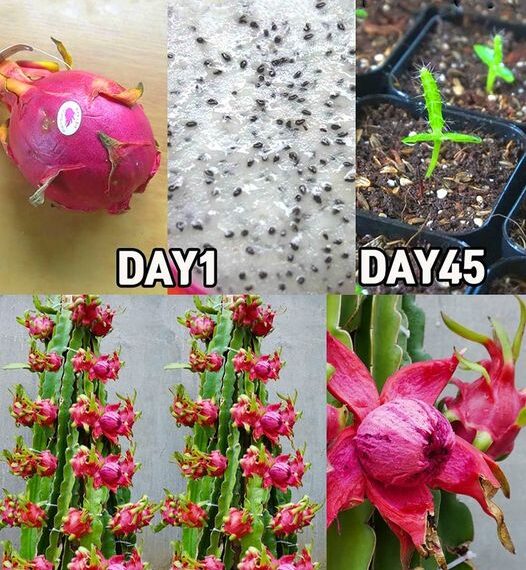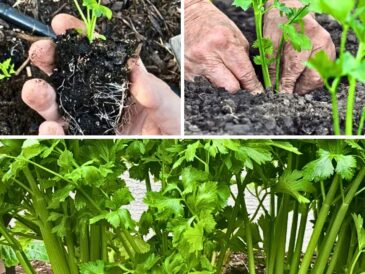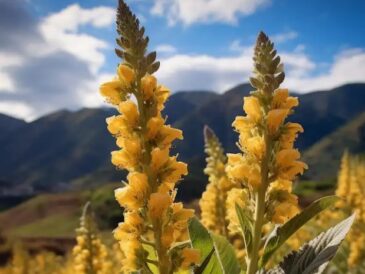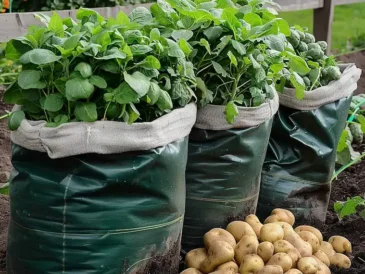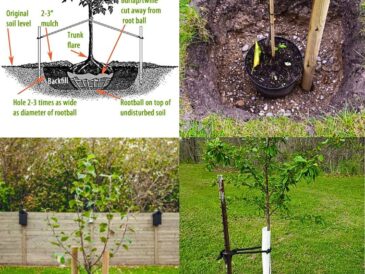4. Planting the Seeds
- Fill the Pot: Add your well-draining soil mix to the pot, leaving about an inch from the top.
- Sow the Seeds: Sprinkle the seeds evenly over the soil’s surface. Lightly press them into the soil without burying them.
- Watering: Mist the soil lightly with water, ensuring it’s moist but not soaked.
- Covering the Pot: Cover the pot with plastic wrap to maintain humidity, which aids germination.
5. Germination Process
- Placement: Place the covered pot in a warm, sunny location. Dragon fruit seeds require temperatures between 70-85°F (21-29°C) to germinate.
- Moisture: Check the soil regularly, misting it as needed to keep it moist. Avoid letting the soil dry out completely.
- Germination Time: Seeds typically germinate within 1 to 4 weeks. Once seedlings appear, remove the plastic wrap.
6. Caring for Seedlings
- Light: Ensure the seedlings get plenty of sunlight—at least 6-8 hours a day. If natural light is limited, consider using a grow light.
- Watering: Water the seedlings regularly, keeping the soil moist but not waterlogged. Dragon fruit is drought-tolerant, so err on the side of less water.
- Transplanting: Once seedlings reach a few inches in height and develop several leaves, transplant them into larger pots if needed.
7. Supporting Growth
- Staking: As the plant grows, provide support with stakes or a trellis. Dragon fruit plants are climbers, and support helps them grow upright and healthy.
- Fertilizing: Apply a balanced fertilizer every 6-8 weeks during the growing season. A phosphorus-rich fertilizer promotes flowering and fruiting.
- Pruning: Regularly prune the plant to remove dead or damaged stems, encouraging healthy growth.
8. Pollination and Fruiting
- Pollination: Dragon fruit plants are typically self-pollinating, but you can hand-pollinate to increase fruit yield. Use a small brush to transfer pollen from the anthers to the stigma.
- Fruiting: Expect fruit within 1-2 years. The fruit is ready to harvest when the skin turns bright pink and the scales start to spread apart.
9. Harvesting and Enjoying
TO CONTINUE READING PLEASE SEE NEXT PAGE
